A 1st degree burn is a skin injury caused by high temperature, chemical reagent, current or radiation. This is the earliest form of damage, in which the upper layer, the epidermis, suffers. Accompanied by slight redness of the skin and slight swelling.
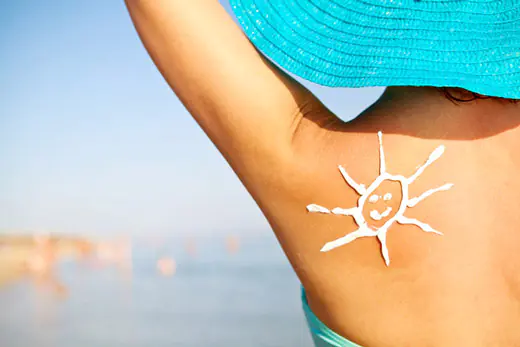
What is a first degree burn?
The human body is designed in such a way that dermal cells are constantly renewed. A first stage burn can be treated in 3-5 days. The hyperemia gradually goes away, the swelling subsides, the skin becomes dry, wrinkled, then the outer layer comes off. It takes about a week to regenerate the epidermis.
Such wounds most often occupy a small area and heal quickly. Rough scars and cicatrices are not preserved even in delicate areas.
1st degree burns result from:
- temperature exposure - boiling water, hot steam, hot objects;
- use of chemicals - acid, alkali, salt;
- electrical – touching exposed wires, damaged electrical appliances;
- radiation burn – excessive exposure to ultraviolet and radiation rays.
Minor irritation often appears due to prolonged exposure to the sun or injury at home (boiling water, hot appliances, electric current). If the skin is injured over a large area, this can cause poisoning by decay products or dehydration. To avoid complications, you need to pay attention to the following symptoms:
- Pain and redness of the skin.
- Dizziness and headache.
- Nausea, vomiting, chills.
- Rapid pulse.
First you need to remove the source of injury and cool the wound. Do not treat burned areas with ice - you can get frostbite.
It is advisable to treat the wound under medical supervision to avoid infection. If a child is injured, be sure to consult a doctor.
Features of 1st degree burns of various types
In order for the treatment of a first-degree burn to proceed correctly, it is necessary to take into account the conditions under which it occurred.
- Thermal burn occurs from contact with hot objects, liquid, steam or fire. The stage of damage is determined by temperature (55-60 degrees), exposure time, thermal conductivity, and characteristics of human skin.
- Fire can damage the airways, face and other areas. If there is clothing at the site of the lesion, this makes it more difficult to remove it and free the wound. Burnt clothing sometimes causes infection.
- Hot objects leave a clear mark at high temperatures. Such burns can be superficial or quite deep.
- Boiling water produces a painful reaction and often affects the deep layers of the skin.
- The steam does not usually cause dangerous injuries, but it can damage the nasopharynx.
- Chemical is characterized by the influence of acid, alkali, and metal salts. The depth of tissue damage depends on the saturation of the substance and the time of its influence. The first degree of a chemical burn is characterized by hyperthermia (redness) and swelling of the skin.
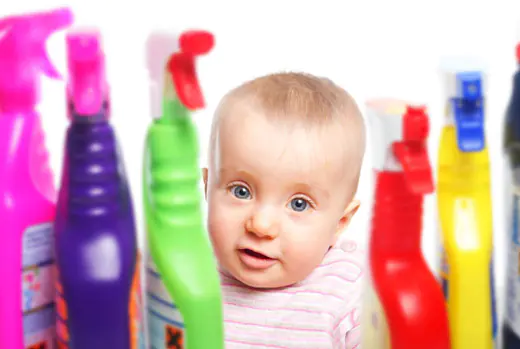
- Concentrated acids, getting on the tissue, dehydrate it, the protein breaks down, and a dry crust with clear boundaries is formed. Necrotic scab can have different colors and structures. Its features characterize the substance that caused the wound.
- Alkalies penetrate the fabric more slowly, but are stronger than acids. They destroy tissue proteins and saponification of fats occurs. The formed scab looks like a loose structure and does not have clear boundaries. It is important for the doctor to know the nature of the scab in order to determine the cause of the burn and further treatment.
- A radiation burn is formed under the influence of solar (UV rays), ionizing (alpha, beta and neural rays), beta and X-rays, and radiation pulses.
Most often, we encounter sun injuries that occur as a result of prolonged exposure to the sun or tanning beds. The skin turns red imperceptibly, swelling and pain may appear. Sometimes bubbles filled with liquid appear. The bubble may burst and the liquid may leak out. The dermis loses moisture, acquires a parchment texture, and the painful area begins to peel off. Dark-skinned people are less susceptible to sunburn. It is not advisable for fair-haired people with delicate skin to sunbathe for a long time.
- Electrical burns occur when contacting exposed wires, damaged electrical appliances, touching the metal surface of a switched-on appliance with a wet hand, or being struck by lightning. In addition to skin damage, there is a malfunction in the cardiovascular, respiratory and other systems of the body.
The conditional percentage proportions of skin damage by burns apply:
- head – 9% of the total body;
- right, left hand - 9% each;
- thoracic region – 18%;
- right, left leg – 18%;
- back – 18%.
The percentage helps assess a person’s condition in order to make a conclusion about the possibility of salvation.
How to distinguish stage 1 burn from other degrees
All burns are conventionally classified into 4 degrees. The most common injury in everyday life is stage I damage.
First-degree burns are characterized by redness of the skin, mild swelling and a burning sensation that lasts for several hours. When you touch the affected area, the pain intensifies.
A second degree burn is a deeper injury. The dermis contains capillaries and nerve endings - their functionality is temporarily impaired. The second degree is characterized by bubbles with liquid (plasma) of different diameters and occupied area. The skin around them may remain unchanged or swelling may appear. The burning pain lasts for several hours after the injury. The bubble may burst, leaving behind a red spot.
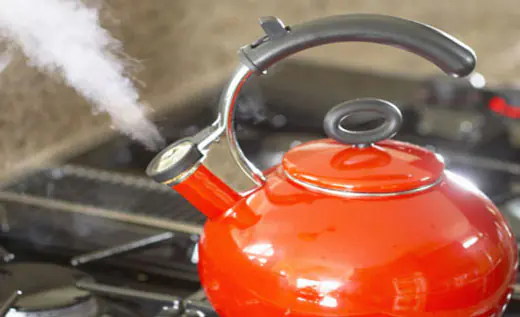
A third degree burn is characterized by damage to the skin down to the fiber. The cover cannot recover on its own - there is a risk of burn disease. The reason for this is the large size of the damage. The wound and dead tissue produce decay products that enter the blood, causing intoxication. Externally, the 3rd degree has a step-by-step manifestation:
- the formation of blisters filled with liquid;
- wound with mucous-bloody discharge;
- swelling and hyperemia of the skin around the wound;
- possible tachycardia, intermittent breathing, low blood pressure;
- increase in body temperature.
First aid
The algorithm of actions depends on the stage and type of skin damage. When providing first aid for 1st degree burns, you first need to eliminate the cause and then treat.
Under the influence of high temperature (boiling water, oil, steam), you need to release the affected area and rinse with cold water. The most traumatic injuries are to the upper respiratory tract, face, and eyes. In this case, it is better to immediately seek help from a medical center. For acute pain, an anesthetic is administered intramuscularly, 1-2 ml of morphine solution 1%, 1 ml of promedol 2%.
- Chemical:
- Carefully release the damaged area and rinse for 10 - 20 minutes with running water.
- A chemical burn from hydrochloric acid is treated with soda or soap solution. Do not wet the affected area, as hydrochloric acid generates heat. Alkaline substances are neutralized with diluted boric, acetic or citric acid.
- The burned area should be dried and then applied with ointment and a sterile bandage.
- Solar:
- Pour cold water over the affected area.
- Lubricate the sore spot with Panthenol, Spasatel or other anti-inflammatory ointments.
- If degree I damage occupies a large area, it would be better to go to the doctor and listen to professional answers and recommendations.
- Electric:
- First you need to de-energize the object.
- If this does not work, you need to remove the person from the current using an insulated object.
- Call an ambulance.
- Provide resuscitation measures.
Treatment at home
A characteristic feature of stage I disease is minor skin damage. If the injury occurred at home, you will have to provide assistance yourself. When exposed to heat, the wound on the leg, hand and other parts of the body is first washed with cold water, and then one of the folk remedies is applied as first aid:
- Sea buckthorn oil is an excellent medicine for treating thermal, chemical and radiation burns. Its value is manifested in its good healing characteristics.
- Soak a gauze pad with sterile sea buckthorn oil, apply to the wound and secure with a bandage. The pain goes away, and the wound heals within a week.
- Sour cream is a good remedy for sunburn. First you need to take a cool shower and then spread the product onto the burned areas.
- Fresh potatoes provide a good soothing effect after sun damage. It is grated on a fine grater, sour cream or kefir is added and applied to the sore spot. This compress helps restore epidermal cells.
- The product can be used for slight redness of the skin and for severe burns with blisters.
In the first stages, antiseptic ointments and creams (Panthenol, Bepanten) are used. Before using them, you must familiarize yourself with the contraindications indicated in the instructions.
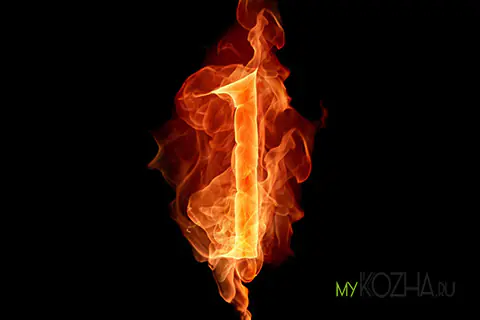
A first-degree burn is the mildest form of injury and is characterized by superficial damage to the epidermis. This injury can occur due to heat, ionizing radiation, chemical agents, or electrical current. However, most often minor burns occur during prolonged exposure to the sun and short-term contact with hot objects or liquids, steam.
Symptoms of a first degree burn
It is quite easy to distinguish the first degree of burn from the rest; its symptoms are known to almost everyone and are not fatal.
- First degree burns cause severe pain, redness and swelling of the damaged area of skin. The affected area becomes bright scarlet in color and slightly rises above healthy areas of the skin.
- A first-degree burn has a distinctive feature - it is not characterized by the formation of blisters/blisters as, for example, in the second degree and persistent scars during the healing process.
- Such a burn passes quickly, does not cause complications and does not leave any functional or cosmetic defects. After just a few days, the surface layer of the epithelium will finally dry out, be torn away and complete recovery will occur.

First aid
Next, we will look at what needs to be done first if a person has received a first-degree burn:
- First of all, it is necessary to remove the source of the burn:
- In case of sunburn, move the person to the shade and cool place
- upon contact with a hot object, most likely the victim has already withdrawn his hand, so the main thing here is that he does not grab the object again; if it is a child, you just need to hide the object or put the child in another room;
- when contacting steam or boiling water, it is also necessary to move the source of the burn or the victim away from each other so that repeated contact does not occur;
- in case of a chemical burn, it is necessary to neutralize the chemical substance (wash it off with water or neutralize it with other possible substances);
- In case of an electrical burn, it is necessary to stop this effect by de-energizing the devices and protect the victim from possible repeated contact.
Cooling with cold water is a universal and effective method used to provide emergency care. It is well suited for both chemical burns and burns caused by electrical current. However, in some cases, it is better to use neutralizing reagents to get rid of an irritating chemical agent. In the case of electric current, do not forget about observing proper safety precautions.
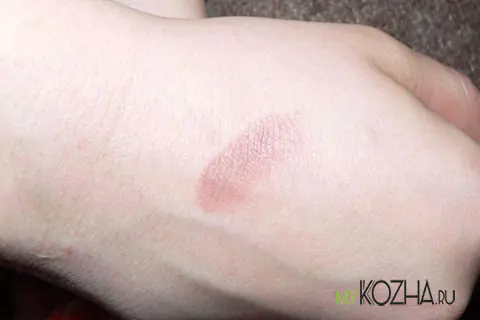
What not to do
- Despite the fact that many people recommend this particular “folk” method, under no circumstances should you smear the burn with sour cream, butter or other substances containing fat. The fact is that fat retains accumulated heat in the body and does not allow the burned area to cool down.
- You should not apply or completely immerse the burn site in ice, as along with the burn you also risk getting frostbite.
- Under no circumstances use other traditional methods - rubbing with potatoes, toothpaste, etc.
Should I see a doctor?
The vast majority of first-degree burns are caused by overexposure to ultraviolet radiation. Sunburn, which causes damage to a large area of skin, can lead to a sharp deterioration in the well-being of the affected person. Medical attention and treatment in this case will be required if one or more of the following symptoms are detected:
- The appearance of painful redness on the skin
- Dizziness
- Nausea
- Dehydration
- Chills
- Increased heart rate and breathing
- Fever
Treatment and medical care for first-degree burns begins with eliminating the factor that caused the damage and cooling the affected surface. This will stop further penetration of burn changes deep into the tissue, reduce pain and significantly speed up the healing process of the burn.
Treatment
Healing of a first degree burn finally occurs in 2-3 days. Treatment for such an injury usually comes down to proper first aid, pain relief, and preventing further infection. Gels and ointments containing NSAIDs (non-steroidal anti-inflammatory drugs/agents), as well as tablet forms of these drugs, can be used as local painkillers. To prevent infection, treatment of a first-degree burn should include antibacterial ointments. If a burn has formed at the site of an existing wound, its treatment is based on the use of ointments with a regenerating effect.
A first-degree burn does not imply the development of a burn disease, so it can be treated at home. The exception is more extensive injuries, accompanied by a sharp deterioration in the well-being of the injured person. In such cases, patients should be treated in an inpatient setting. Extensive burns should be recorded in the medical record. In the future, this can help the doctor timely identify signs of skin cancer or other diseases that can cause a burn.
First degree burns cause pain, redness and swelling of the damaged epidermis. This condition is not dangerous to human health and does not require hospitalization of the victim. Treatment of first-degree burns is aimed at reducing symptoms and is based on the use of antibacterial and pain-relieving ointments.
First aid for first degree burns
- Cool the damaged area of skin for 10-20 minutes. This will help reduce pain and the extent of thermal effects. Depending on the location of the injury, you can use running cold water or a cold compress on the injury site. Cooling can only be done for the first 2 hours after injury.
- Lubricate the wound surface with anti-burn ointment (D-panthenol, Bepanten) and apply a sterile bandage.
- If necessary, take a pain reliever and monitor how you feel.
Under no circumstances should you lubricate the injured area with vegetable oil, alcohol-containing substances or starch when providing first aid for a burn of 1 or any other degree. This only enlarges the affected area.
First aid for 1st degree thermal burns is provided immediately after injury.

Peculiarities
In addition to knowing how to provide assistance in case of a burn from boiling water, a hot object or exposure to sunlight, you need to know the symptoms that appear in order to correctly recognize the nature of the damage. The first degree is characterized by the following symptoms:
- sharp pain;
- swelling and redness of the damaged area;
- the color of the burned skin becomes bright scarlet;
- Blisters and scars will NOT form.
Such an injury passes quickly and does not leave behind any cosmetic defects. Final recovery will occur as a result of the rejection of the surface epithelium and the formation of a new one in its place. Therefore, the first thing to do in case of a 1st degree burn is not to panic and remain calm. Having assessed the severity of the skin lesion, you just need to begin providing medical care.
What to do if the burn is swollen, inflamed and does not go away for a long time - consult a doctor.
Further treatment
In order to restore pigmentation to the skin after a first-degree burn and recover faster, it is possible to use certain medications:
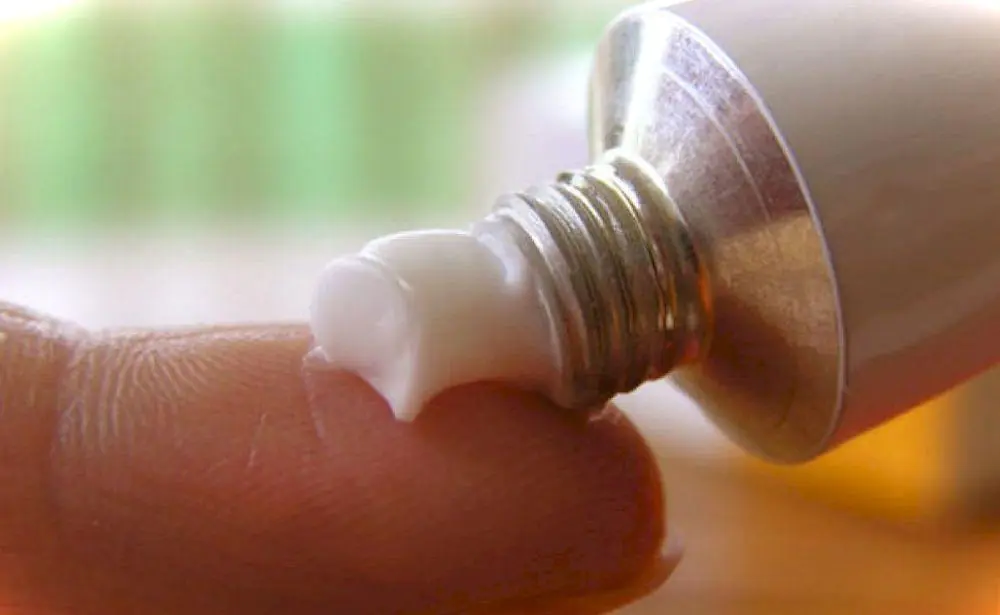
- Olazol. This ointment is an excellent antiseptic because it stops the growth and development of pathogenic microorganisms. Also speeds up the healing process.
- Panthenol. First aid for a 2nd degree burn, as well as a 1st degree burn, can be done using this ointment. It is used for various types of damage, ranging from minor abrasions to significant wounds.
- Solcoseryl. This remedy is used for thermal or sunburn injuries.
- Non-steroidal anti-inflammatory drugs. Used as pain relief and to prevent further infection.
It is very convenient to use anti-burn medications in aerosol form. You can also purchase special wipes at the pharmacy that have analgesic and antiseptic effects.
Treatment of a 1st degree burn is possible at home, since this type of injury does not imply the development of a burn disease. However, if the condition worsens, swelling and redness increases, you should immediately consult a doctor for medical help.



